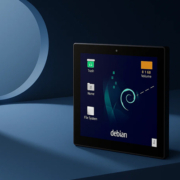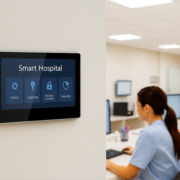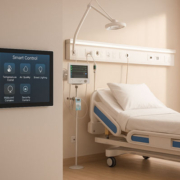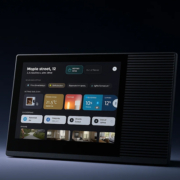Zigbee Smart Home Control Panel Devices: The Future of Home Automation
Zigbee is one of the leading communication protocols for smart home devices. It’s known for its reliability, energy efficiency, and scalability, making it an ideal choice for building a connected and automated home. Zigbee smart home control panel devices allow you to manage all of your Zigbee-enabled devices from a central hub or control panel. Whether you’re setting up a new home automation system or enhancing an existing one, these devices offer a seamless experience for controlling everything from lighting to security systems.
What is Zigbee?
Zigbee is a wireless communication standard designed for short-range, low-power device connectivity. It’s widely used in home automation, industrial control, healthcare, and other applications where reliable communication is essential, but power consumption needs to be minimal.
One of the key advantages of Zigbee is its mesh networking capability, meaning that devices can communicate with each other and relay messages. This extends the range of your Zigbee network and improves reliability, especially in larger homes or buildings. Zigbee also operates on the 2.4 GHz frequency, which is globally available, making it ideal for international use.
Why Choose Zigbee for Your Smart Home?
-
Low Power Consumption
Zigbee devices are designed to be energy-efficient, which means they consume less power compared to other wireless technologies like Wi-Fi or Bluetooth. This results in longer battery life for devices such as smart locks, sensors, and thermostats. -
Reliable Mesh Network
Zigbee’s mesh networking allows devices to act as repeaters, enhancing the coverage and reliability of your smart home network. Even if one device goes offline, the network can automatically route messages through other devices, ensuring continuous communication. -
Wide Compatibility
Zigbee is supported by many major smart home brands, making it easier to integrate devices from different manufacturers into a single system. This broad compatibility allows users to create a customized home automation ecosystem. -
Security
Zigbee uses robust encryption methods to secure communication between devices, ensuring that your smart home data remains protected from unauthorized access.
Zigbee Smart Home Control Panel Devices
Zigbee-enabled control panels act as the central hub of your smart home ecosystem. They allow you to manage and monitor all Zigbee-compatible devices from one convenient location. Here are some common Zigbee smart home control panel devices that can help you get started:
1. Zigbee Smart Home Hubs
A Zigbee smart home hub is the core of your Zigbee network, providing the gateway between your Zigbee devices and other smart home technologies like Wi-Fi or the cloud. It manages communication between Zigbee devices and the control panel or mobile app. The hub usually connects to your Wi-Fi network, enabling remote access and control of your Zigbee devices.
Some popular Zigbee hubs include:
- Amazon Echo Plus: A smart speaker with built-in Zigbee support, allowing it to control Zigbee-compatible devices directly.
- Samsung SmartThings Hub: One of the most popular and versatile smart hubs, supporting both Zigbee and other protocols like Z-Wave.
- Philips Hue Bridge: Specifically designed for controlling Zigbee-enabled Hue lights, it also supports other Zigbee devices.
2. Zigbee Smart Control Panels
A Zigbee smart control panel is a touchscreen device that acts as the primary interface for controlling your Zigbee smart home devices. These panels typically offer a visual dashboard where you can view, control, and automate the devices connected to your Zigbee network.
Key features of Zigbee smart control panels:
- Centralized Control: Manage your Zigbee lights, thermostats, sensors, locks, and other devices from a single interface.
- Customizable Interface: Many panels allow you to create custom scenes, set schedules, and manage groups of devices based on your preferences.
- Mobile App Integration: Some Zigbee control panels come with companion mobile apps for remote management and notifications.
Popular models include:
- Portworld YC-SM10P: A 10-inch smart home control panel that offers Zigbee integration, allowing you to control and monitor Zigbee devices in your home.
- Philips Hue Smart Panel: A sleek and easy-to-use control panel specifically designed for managing Philips Hue lights, but can also manage other Zigbee devices when connected to a compatible hub.
3. Zigbee Smart Sensors
Zigbee-enabled sensors can be integrated with your control panel to monitor various aspects of your home. These sensors provide real-time data on things like motion, temperature, humidity, door/window status, and more.
Popular Zigbee sensors include:
- Motion Sensors: Detect movement and trigger automation actions, such as turning on lights when someone enters a room.
- Temperature and Humidity Sensors: Keep track of indoor climate conditions and allow for automation based on your preferred settings.
- Door/Window Contact Sensors: Detect whether a door or window is open or closed, and can trigger actions like turning on lights or setting alarms.
4. Zigbee Smart Lights and Bulbs
Zigbee smart lights and bulbs are among the most popular Zigbee devices in smart home setups. These bulbs can be controlled remotely, dimmed, or color-changed using your Zigbee control panel.
Some popular Zigbee lighting products include:
- Philips Hue Lights: A popular choice for smart lighting, with a wide range of bulbs, lamps, and light strips compatible with Zigbee.
- IKEA TRÅDFRI Smart Lighting: Affordable Zigbee-enabled lighting options, including bulbs, motion sensors, and remote controls.
Setting Up Your Zigbee Smart Home Control Panel
Setting up a Zigbee control panel and integrating it with other Zigbee devices is a straightforward process. Here’s a step-by-step guide:
Step 1: Choose Your Hub and Control Panel
- Select a Zigbee hub that is compatible with the devices you want to control.
- Choose a Zigbee smart control panel or app that suits your preferences and needs.
Step 2: Install and Power Up the Devices
- Follow the manufacturer’s instructions to set up your Zigbee hub, control panel, and devices.
- Ensure the hub is connected to your Wi-Fi network and the control panel is powered on.
Step 3: Pair Devices with the Hub
-
Using the control panel or app, pair your Zigbee devices with the hub. This typically involves selecting the device from a list or scanning for nearby devices.
Step 4: Create Automations and Scenes
-
Once the devices are connected, use the control panel to create automation rules and scenes. For example, you could set a “Good Morning” scene that turns on the lights and adjusts the thermostat at a specific time.
Step 5: Test the System
-
Test each device to ensure everything is working correctly. Try controlling your lights, locks, sensors, and thermostats to verify proper functionality.










